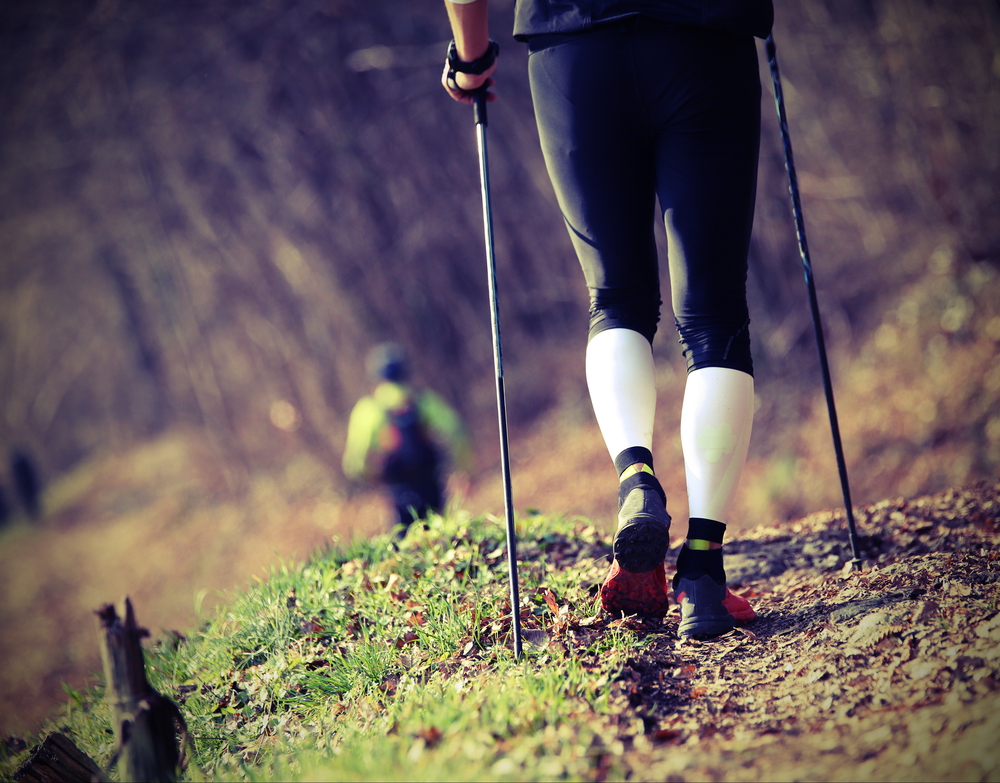Running on the road and trail running might as well be two different sports. While both require a similar level of endurance and cardiovascular health, that’s pretty much where most of the similarities stop.
Unlike road running, where you rarely have to climb up or go down, trail running consists f you having to move through steep terrain at all times while managing to keep your orientation and know where you’re going.
Because of the fact that you’re constantly going uphill or downhill when you run, it’s recommended that you use poles for trail, which allow you to use a more efficient technique that uses both your arms and legs to get you moving. So today, in the paragraphs below, we will be discussing how you can use poles for trail running, why it’s a must-do, and what are the different techniques you should learn.
So, if that sounds like your cup of tea, then keep on reading.
When is Using Poles Recommended?
Now, when we talk about trail running, please don’t imagine going through your local park – for that kind of activity, it’s highly unlikely you will need the help of an accessory to get around, even if there are one or two hills to climb. Instead, trail running is typically a sport done in the mountains, where you’re required to run and hike up steep hills. In those situations, learning how to use poles will help you because it will help you save energy while also engaging your arms and giving you extra power so you can run faster while climbing and with more efficiency.
Additionally, when you’re going downhill, poles can help you keep your balance and avoid obstacles. Having said that, it’s important to protect your poles when descending on rocky terrain, as the poles can get stuck between the rock and then snap in two – a scenario that you likely want to avoid.
How to Begin Using Your Poles
Running with poles in your hands doesn’t come naturally for most people, as we’re used to moving our hands around while performing the exercise. And so, in order to get used to it and to potentially start to excel at it, you have to start training.
The first way is to start by learning how to wear the straps properly. It’s vital that you put the hand through the strap from bottom to top and then grip the handle. That will allow you to push down on the straps while keeping your hand relaxed. After you get the hang of that, you have to master the synchronization, as that’s the only way to become efficient. To begin, you can do the following short exercise:
- Walk normally, without using the poles, and keep your arms down by your sides.
- From there, start to swing your arms by your side naturally.
- Once you get used to that, introduce the poles and keep the same natural swing.
- When your leg swings through, your opposite arm has to go up – that’s the synchronization you have to look for.
Training is a long road, though, and you definitely should take your time. By the end, you have to feel the poles as a part of your body, not some external accessory that you constantly have to think about.
Best Techniques for Using Your Poles
There are three distinct ways to use your poles, and which one you use depends entirely on the terrain and the speed you’re trying to sustain.
Double Pole Plant
If you’re on extremely steep terrain and you need to have maximum power, then this is your technique. Here, both arms come up at the same time, and you drive your poles simultaneously into the ground in front of you, then learn forward and push on them for three steps.
Alternating
This is the preferred technique for walking fast on sustained, steep terrain. As discussed in the suggested exercise above, here, your job is to alternate your left and right poles so that they’re in sync with your stride. The poles should be angled to the rear when they hit the ground, as that will enable you to push forward quickly.
Offset Pole Plant
This one is considered to be great for racing, as it allows you to use your poles even in the fast parts of the race. It’s also your go-to technique for easy climbs. It’s more efficient than alternating, and it requires you to plant your pole every three strides – in a way, it’s considered to be a combination of the double pole plant and the alternating technique.
In Conclusion
Hopefully, as this article is ending, you now have learned why poles are necessary for trail running, how you can use the, and the top three techniques that runners typically use. Of course, if you have any further questions, please leave them for us in the comment section.
Related Posts: